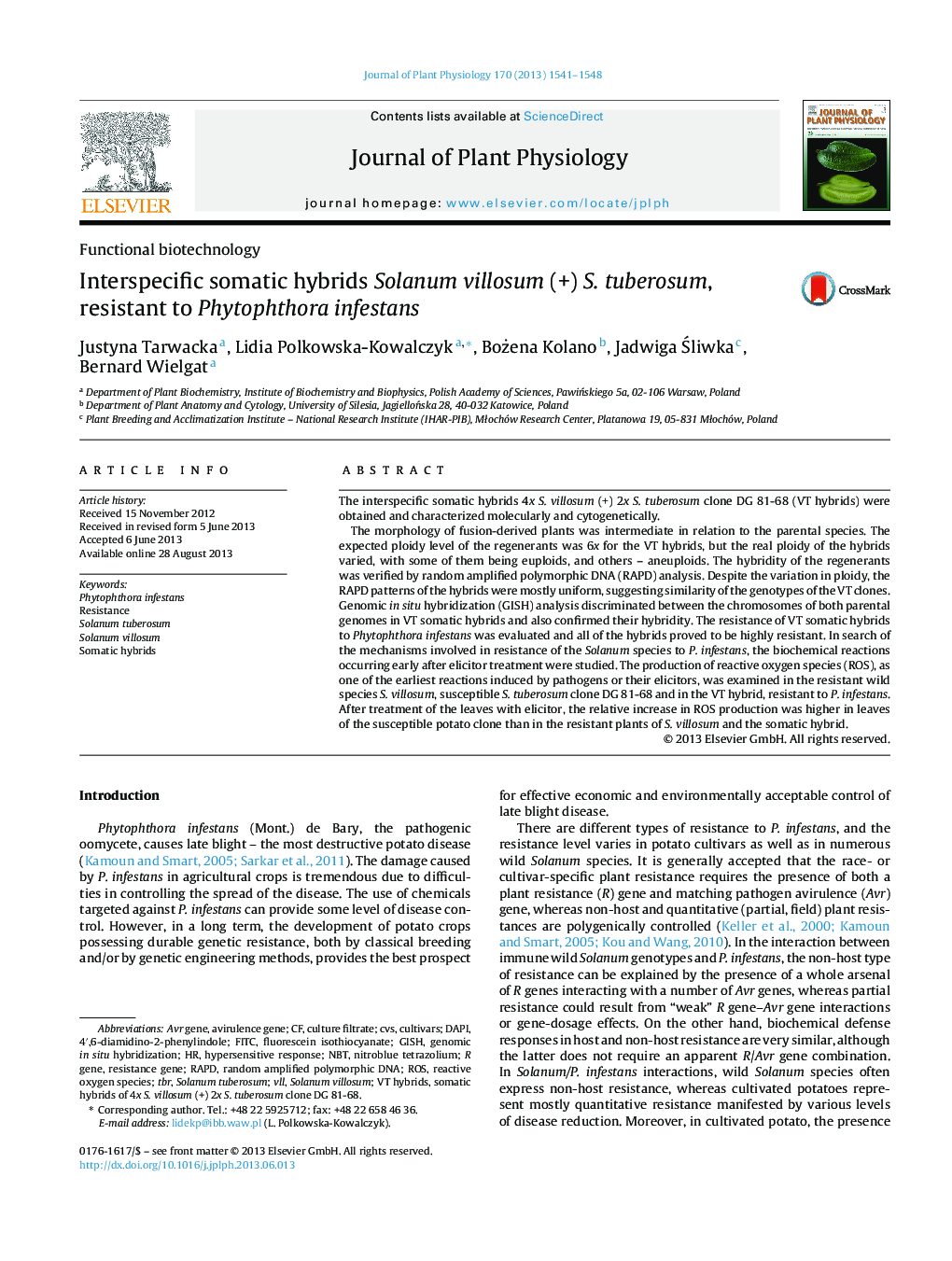| Article ID | Journal | Published Year | Pages | File Type |
|---|---|---|---|---|
| 2055954 | Journal of Plant Physiology | 2013 | 8 Pages |
The interspecific somatic hybrids 4x S. villosum (+) 2x S. tuberosum clone DG 81-68 (VT hybrids) were obtained and characterized molecularly and cytogenetically.The morphology of fusion-derived plants was intermediate in relation to the parental species. The expected ploidy level of the regenerants was 6x for the VT hybrids, but the real ploidy of the hybrids varied, with some of them being euploids, and others – aneuploids. The hybridity of the regenerants was verified by random amplified polymorphic DNA (RAPD) analysis. Despite the variation in ploidy, the RAPD patterns of the hybrids were mostly uniform, suggesting similarity of the genotypes of the VT clones. Genomic in situ hybridization (GISH) analysis discriminated between the chromosomes of both parental genomes in VT somatic hybrids and also confirmed their hybridity. The resistance of VT somatic hybrids to Phytophthora infestans was evaluated and all of the hybrids proved to be highly resistant. In search of the mechanisms involved in resistance of the Solanum species to P. infestans, the biochemical reactions occurring early after elicitor treatment were studied. The production of reactive oxygen species (ROS), as one of the earliest reactions induced by pathogens or their elicitors, was examined in the resistant wild species S. villosum, susceptible S. tuberosum clone DG 81-68 and in the VT hybrid, resistant to P. infestans. After treatment of the leaves with elicitor, the relative increase in ROS production was higher in leaves of the susceptible potato clone than in the resistant plants of S. villosum and the somatic hybrid.
